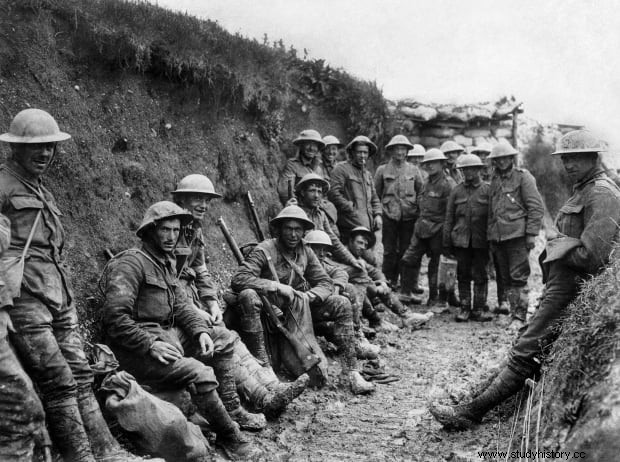
World War I was one of the most devastating and cruel wars in human history. Over nine million soldiers died, along with more than seven million civilians dead. Several million were injured, either by bullets, splinters or mustard gas. The survivors suffered from PTSD, known at the time as shell shock. The fierce battle also left scars on the battlefields forever; Farmers in Belgium and France continue to uncover unexploded ordnance. With so much death and destruction, countless monuments commemorating the dead have been created. Some former battlefields have been turned into museums or cultural heritage sites. This article will list some of the World War I sites or monuments you should visit if you want to fully understand the legacy of the terrible conflict. First, this article will provide a brief overview of World War I.
Historical context
World War I lasted from 1914 to 1918, and it spans the globe. Soldiers fought in Europe, the Middle East, Africa and on the high seas in the Atlantic and Pacific Oceans. The war began when Gavrillo Princip assassinated the heir to the Austro-Hungarian Empire, Archduke Franz Ferdinand. This assassination triggered a chain reaction of incidents among European countries. Bound by different treaties, each country sided and declared war on the enemy. The most important combatants during World War I were Allied powers (mainly France, Britain, Russia and America) against the central powers (mainly Germany, the Ottoman Empire and the Austro-Hungarian Empire).
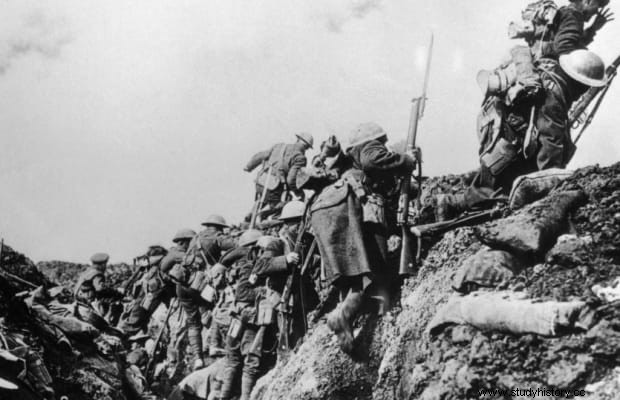
The ditches
Without a doubt, World War I is best known for trench warfare. In this fighting style, both sides dug deep trenches on the battlefield. Soldiers lived and fought in the trenches. Living conditions were miserable. The ditches were infested with rats, which brought with them lice and other diseases. In addition, the trenches were usually damp, cold and muddy. If that was not bad enough, soldiers lived in constant fear of artillery bombardment or enemy attacks.
But the most feared order was that the soldiers should "go over the top" and attack the enemy's ditch. To do this, they had to travel through no man's land:the area between two enemy trenches. The area was permeated with shell holes, barbed wire and dead bodies. When the soldiers reached the enemy's ditch, a powerful machine gun greeted the fire and killed or wounded many men. Ditch attacks achieved very little; attacking soldiers captured only a small amount of ground. Attacking soldiers were often forced to give up their newly acquired territory. Very soon, these senseless and bloody attacks made the war a static one. Until 1918, soldiers penetrated the trenches and waited to meet their fate in Ingenmannsland. Too many men, went over the service as their death mark.
New Weapons
World War I I introduced new weapons that greatly increased bloodshed. As mentioned above, new machine gun models and precision artillery were killed on a unique scale. Hand-held explosives such as grenades added a new element to the soldier's arsenal. World War I also introduced the idea of modern warfare. Generals on both sides intended to use tanks as a way to break the deadlocked trench warfare. These huge masses of machines left many soldiers frozen in fear. But the most frightening invention was mustard gas.
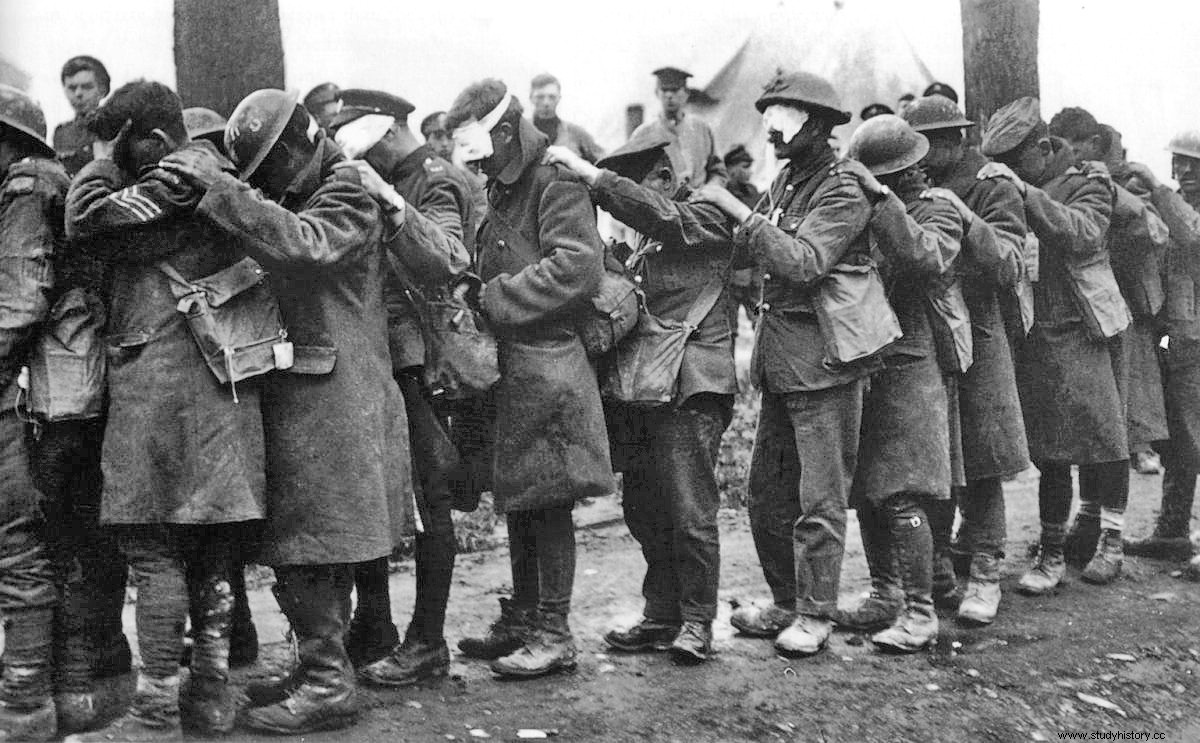
Mustard gas is mainly liquefied chlorine gas. The weapon got its name from the green-yellow cloud it traveled in. Mustard gas was first used by the Germans at the Second Battle of Ypres. The effects were devastating. The gas burned skin, lungs and blinded many. The survivors had either severe skin burns or respiratory problems in the lungs. Use of toxic gas violated international law, considered by some to be a war crime. The 1899 Haque Convention prohibited the use of gas to poison soldiers. However, each nation ignored this and used the deadly compound in World War I.
ceasefire
At 11 o'clock on the 11th day of the 11th month, 1918, World War I ended. A vulnerable and starving Germany signed a ceasefire with the Allied forces. Suddenly the war was over and millions of soldiers could return home. However, more death would follow. The Spanish flu in 1918 appeared during the last months of the war and killed between 20 and 50 million people. The pandemic finally ended in 1920.
In 1919, a number of peace treaties officially ended the war. They are known as the Treaty of Versailles, signed by Germany and the Allies. The Treaty of Versailles is controversial due to the requirements imposed on Germany. Among the demands include:Germany accepts sole responsibility for starting the war, disarmament of German forces and payment of war compensation. These demands combined to paralyze Germany economically as well as to humiliate German society. The shame of the Treaty of Versailles embittered many Germans. Later, Adolf Hitler would take advantage of this bitterness when he and the Nazis came to power. An entirely new generation of German children was raised to abhor the Treaty of Versailles. Hitler lit the flames of revenge; Germany had to avenge the shame of the Treaty of Versailles.
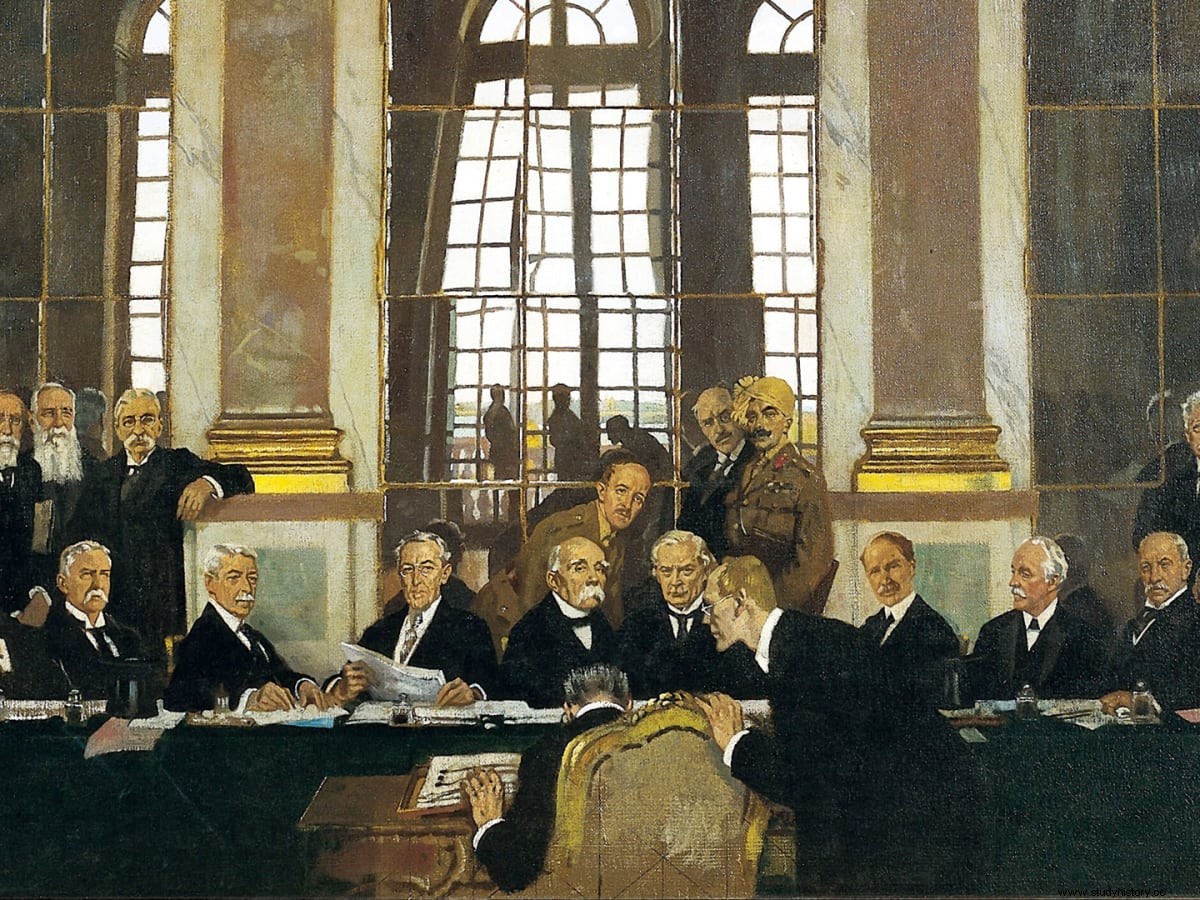
World War I Consequences
World War I had many consequences that were felt throughout the world. First, the war ended several major empires, such as the Austro-Hungarian, German and Ottoman kingdoms. In Russia, the monarchy of Nicholas II was overthrown by a communist revolution led by Vladimir Lenin and the Bolsheviks. Only the British Empire survived the war unscathed.
The globe enjoyed two decades of peace until World War II broke out. No one wanted war again; the nightmares of the last conflict were fresh in people's memories. However, Adolf Hitler and Nazi Germany brought the war back into the world. What was supposed to be "the war to end all wars" did not live up to the name.
Important monuments and sites
Now that we've taken a brief look at the history of World War I, let's examine some of the monuments and sites commemorating the war and its victims. Although France and Belgium undoubtedly contain the most sites and monuments from the First World War, the following list tries to cover places all over the world. Whatever the origin, here are some World War I sites and monuments you should visit.
Canadian National Vimy Memorial:France
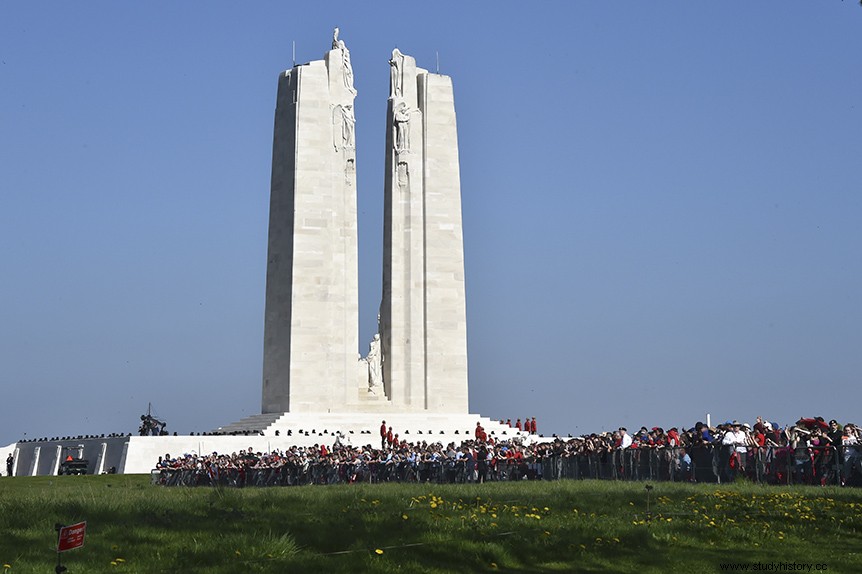
This memorial stands on the site of the most important battle fought by Canadian forces:the Battle of Vimy Ridge. Fighting from 9-12 April 1917, Canadian forces were tasked with capturing the backs that overlooked the Allied lines. The area was heavily fortified by the German soldiers. The Canadians wanted to attack the hill over the open country; they would be easy targets for German artillery and machine guns. The fighting was fierce, with over 10,000 12 Canadians killed or wounded. However, the Canadians proved their worth and caught the back XNUMX. April. The victory was an important one for Canada. It demonstrated that the Canadians could fight alone, without the help of the British or the French.
The large marble-white sculpture was erected in 1936. The sculpture is inscribed with the names of the 11,285 XNUMX Canadians who were killed throughout the war, not just Vimy Ridge. These fallen soldiers have no known graves. The monument survived World War II and continues to be a moving reminder to the fallen Canadian soldiers. The sculpture also serves as a testimony to all those who perished in the Great War.
The Latin Bridge:Sarajevo, Bosnia
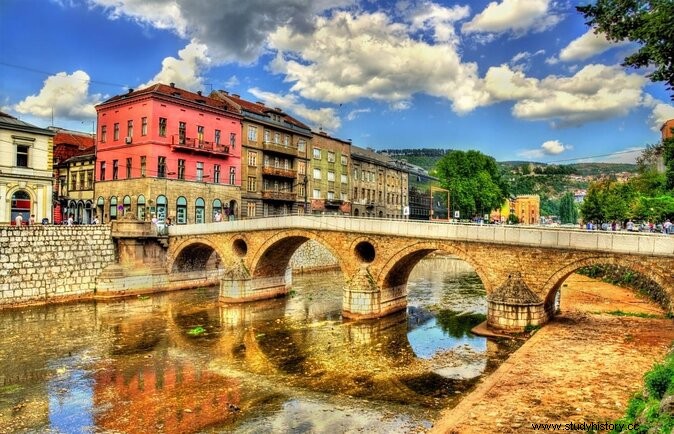
The Latin Bridge is where Gavrillo Princip fired his fateful shots at Archduke Franz Ferdinand and his wife. The significance of this site is significant:this is where the igniting incident during World War I took place. During the 1990s, rivalries re-emerged in the Balkans, threatening the Latin Bridge. The structure survived a 1,425-day siege that left thousands of Sarajevo citizens dead. Today, tourists from all over the world gather to cross the bridge or visit the museum located near the site. The museum marks the place where Princip killed the archduke.
For those who want to learn more about the exciting event of the First World War, the Latin Bridge in Sarajevo is the perfect place.
Przemsyl:Poland
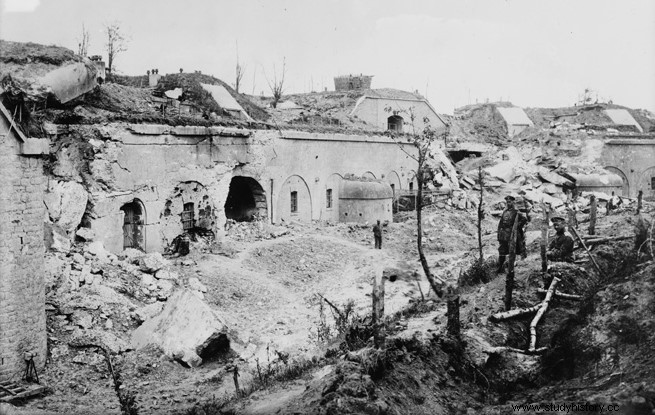
People tend to mention the fighting on the Western Front (trench warfare in France and Belgium) when discussing World War I. However, World War I also had an eastern front. On that front, Germany and the Austro-Hungarian Empire fought against the forces of the Russian Empire and their allies. The fighting on the Eastern Front was equally brutal, with millions on both sides killed or wounded.
At that time, Przemsyl was an Austro-Hungarian fortress town on the border with the Russian Empire. In September 1914, Russian forces moved in and besieged the city. This led to the longest siege of the entire war in six months. Eventually, the Austro-Hungarian defense crumbled, and the Russians captured the city. During the siege, the inhabitants lived through hunger and disease. Accounts from found diaries also reveal racial tensions boiling over, mostly against Jewish people. When the Russians entered the city, Cossack soldiers whipped and beat Jewish people, forcing many to hide.
The city today
The city has now been changed. Visitors can stroll through the remains of the fortifications that stretch across the city all the way to the Ukrainian border. There are also four cemeteries that provide the final resting place for Russian, German and Austro-Hungarian soldiers. Finally, the statue of The Good Soldier Svejk stands on the city's main square. Svejk is a character in the anti-war novel The Good Soldier Svejk by author Jaroslav Hasek. Weak symbolizes the ordinary soldier, reluctantly drawn into battle for his empire.
Prezmsyl provides a fascinating insight into what the fighting looked like on the often neglected Eastern Front of World War I.
Langemark German Cemetery:Belgium
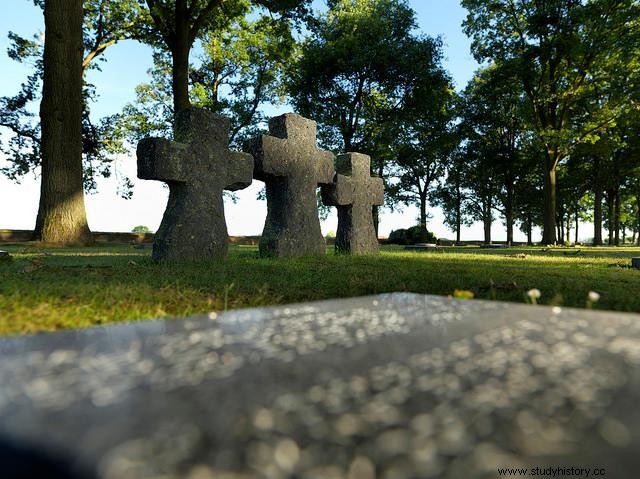
There are many cemeteries all over Belgium that contain the remains of fallen soldiers. Visiting one of these cemeteries is a gripping experience for both veterans and tourists. This applies to Langemark German cemetery. In this cemetery are the remains of 44,000 1914 German soldiers who died during the first battle of Ypres in XNUMX. The soldiers were inexperienced volunteers, some of them high school or college students. These healthy volunteers were shot down by Allied machine guns as they attacked enemy positions.
Taking a walk among the tombs is a gloomy experience. The stone crosses serve as a reminder of the horrors of war. It also shows how World War I killed an entire generation of young men from around the world.
Farnbourough Airport:England
Air combat really came into its own in the First World War. First, aircraft were used to observe enemy positions, take intelligence photos or bomb enemy shooters. However, most plans had flimsy designs. They were not intended for ariel combat. As the war progressed, new and better fighters appeared. These new aircraft had stronger designs along with new weapons, such as the launch of machine guns. A new type of fight soon emerged:the dog fight. In a dogfight, two enemy planes dueled with the intention of shooting down the other fighter plane. In 1915, the French sky was filled with whirling fighters.
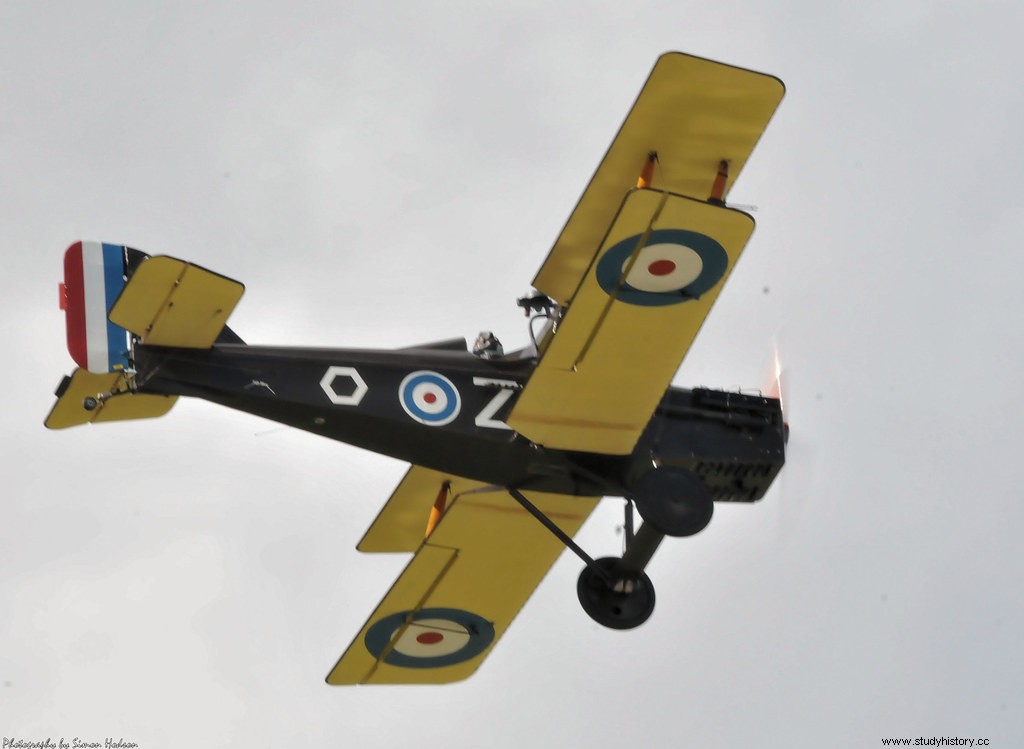
Five or more kills turned a pilot into an ace. These pilots became celebrities in their home country. The most famous of these was Manfred von Richtoffen from Germany. von Richthofen was nicknamed the Red Baron for his noble Prussian heritage and bright red fighter jets.
From 18-20 July, Farnbourough Airport in the UK, hosts the Fairbourough Airshow. The show shows replica aircraft from World War I that restore air battles between German and British forces. For anyone who loves World War I aerial combat, attending the Farnbourough Airshow is a must.
Claire de l'Armistice:Theodes, France
As the name suggests, this is the place where Germany surrendered to the Allies. The area is a clearing in the Compeigne forest just north of Paris. French commander and commander of the allied forces, Marshal Ferdinand Foch, chose this area as the site of Germany's surrender. German generals traveled to the forest and signed the armistice in Foch's private railway carriage.
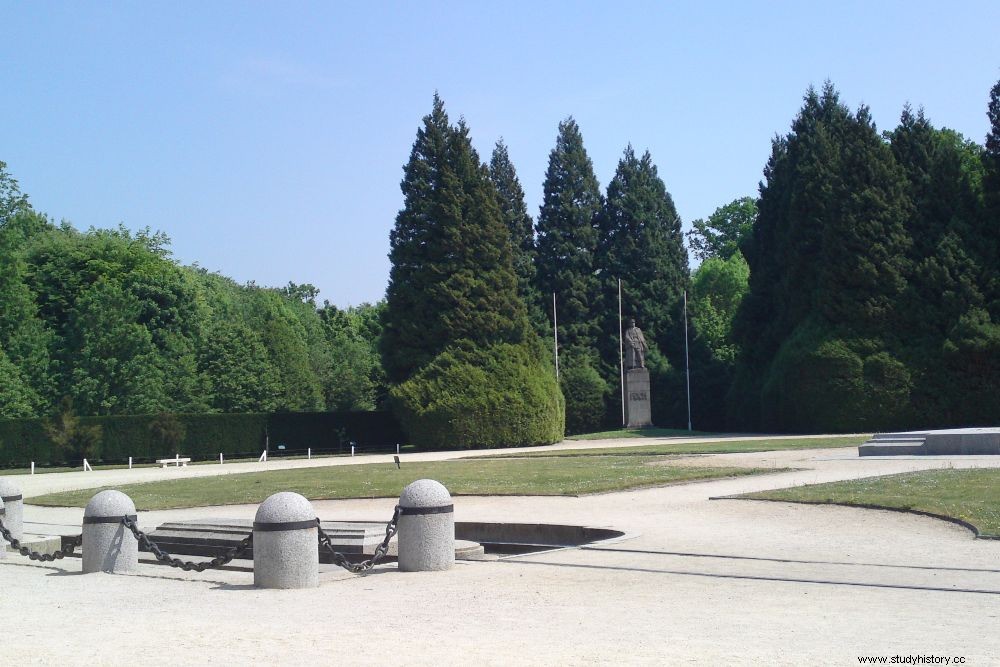
After the war, the French government transported the wagon from the clearing to a museum. However, the chariot returned to the clearing in 1940. It was this year that Adolf Hitler conquered France in World War II. Hitler wanted to recreate the arms signing, down to the smallest detail. Except this time with Germany winning. Hitler had other French monuments from the First World War stored or destroyed. After the defeat of Nazi Germany, the lost French monuments were either returned or restored. The monuments were later returned to the clearing.
Today, clearing has an important purpose. It is a place where visitors can reflect on the two most devastating wars of the 1920s.
the conclusion
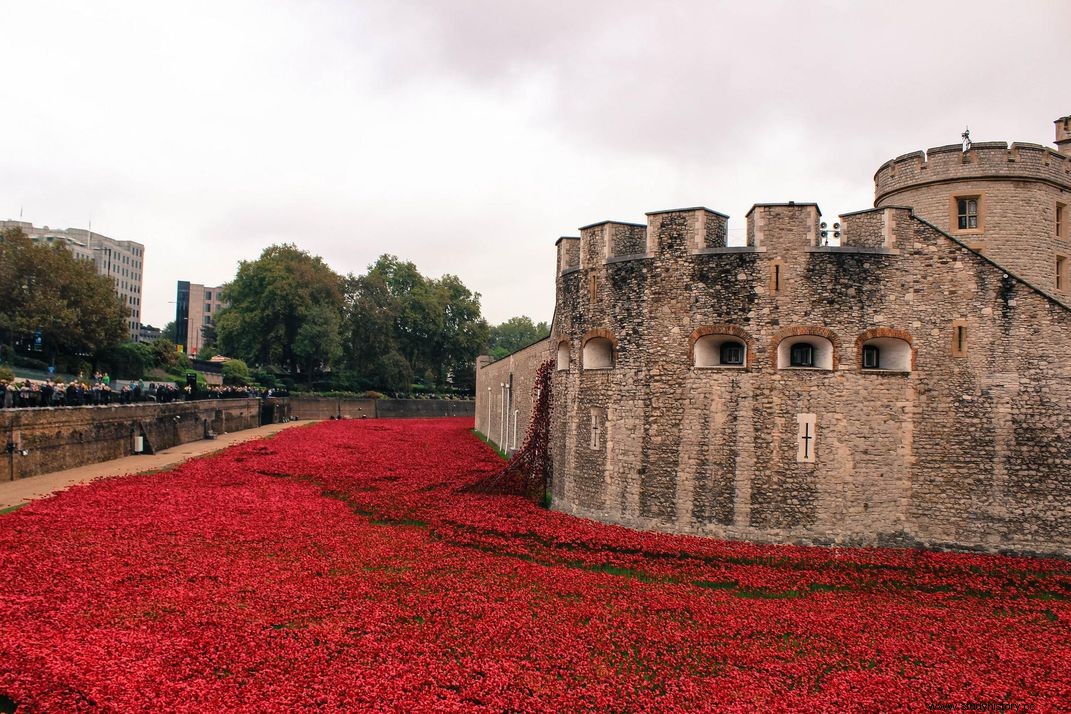
From 1914-1918, World War I destroyed the world. France, Britain, Russia and the United States fought against Germany, Austria-Hungary and the Ottoman Empire on battlefields around the world. In this massacre, nine to eleven million soldiers died. Many more were injured. Civilian deaths were also high:about six to thirteen million people died. The war introduced new methods of murder and mutilation. These included tanks, fighter jets, grenades and toxic gas. World War I also led to trench warfare, a horrific form of combat that killed or injured millions of people.
With so much death and destruction, places and monuments were created to remember the fallen men. As this article shows, places and monuments come from many different countries. Some are giant sculptures, others are entire cities. Whatever the case, the sites and monuments listed above serve as a constant reminder of the atrocities and tragedies of all wars, not just the First World War. Hopefully this article inspires you to visit some of the places listed.
